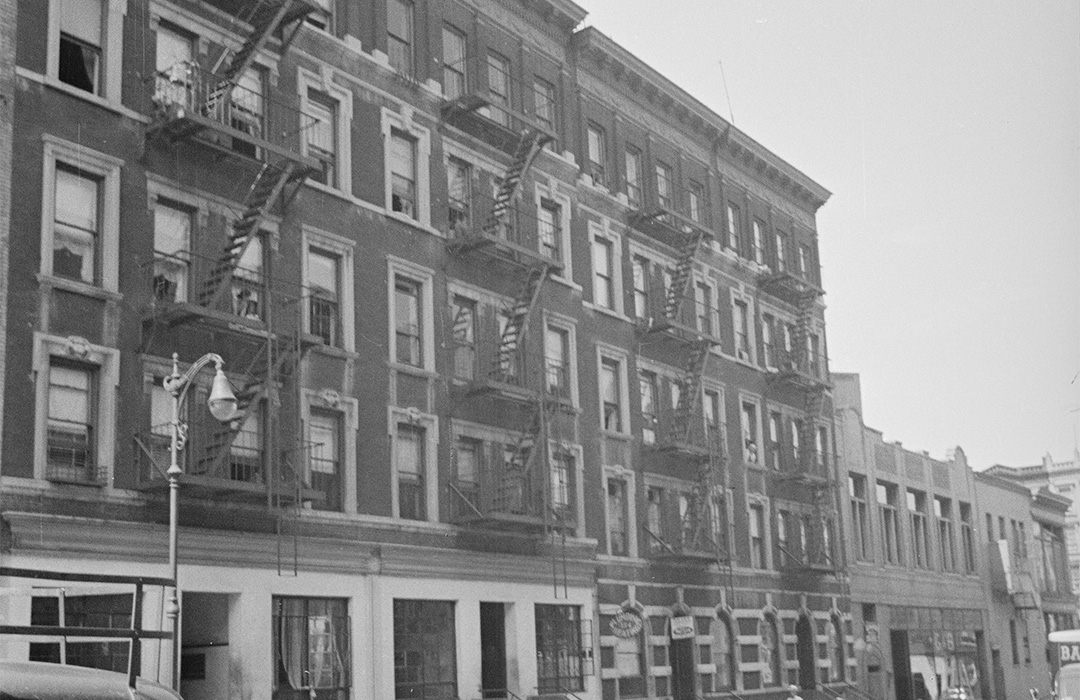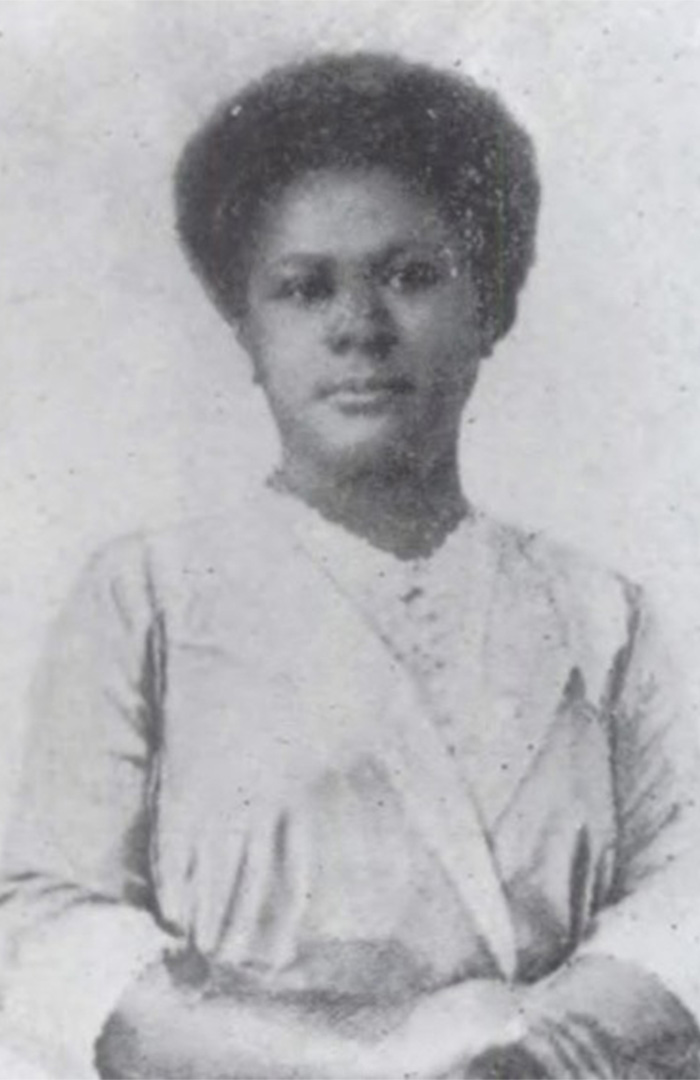
The Stillman House
by Claudie Benjamin
One outcome of the catastrophic events of 9/11 was to engender strong public respect for New York City’s fire fighters, police and other first responders. The worst of the Covid years brought general awareness of our dependence on first responders and the extreme demand on clinical providers into high relief. Any other response other than respect was impossible along with gratitude for the selflessness of people who put themselves on the front line to help others. The phrase “Thank you for your service” came to be widely extended in appreciation. So, it’s profoundly shocking to learn that early pre-antibiotic 20th Century New York City with tuberculosis and pneumonia common among young and old, and typhoid and Spanish Flu on the horizon, clinically credentialed nurses of color were hard pressed to find work. The prejudice was entrenched in both policy and practice. As recently as the 1940s, Black nurses who joined the military could only get assignments caring for Nazi prisoners of war [1] and Black military personnel. However, there are always courageous activists who found a way to do what they believe is right. Elizabeth Tyler Berringer RN, is one example from the early 1900s. Elizabeth had received such an education, both from Freedmen’s Hospital Training School for Nurses and the Lincoln School for Nurses, but despite this, she was not only restricted from treating white patients, but people of her own ethnicity didn’t trust her.” [2] She was hired in 1906 by progressive era activist nurse Lillian Wald, founder of the Henry Street Settlement. As “the first black visiting nurse,” her first charge was, “to address the high tuberculosis morbidity and mortality rates in Black communities.” [3]“these courageous, self-assured women assumed the monumental task of providing physical comfort, psychological support, health education and bedside care to thousands of Black infants, children, men, and women.”Unable to find patients near the downtown Henry Street Settlement neighborhood, this enterprising nurse tackled the challenge by applying her efforts in a different way. She focused on addressing the many health care needs of the Black families who were living in poverty further uptown in San Juan Hill. Having gained Wald’s support to start a branch first known as Stillman House at 154 West 62nd Street, where she was joined in her work by two other Black nurses as well. An article in the Amsterdam News refers to nursing historian Marie O. Pitts Mosley who wrote, “these courageous, self-assured women assumed the monumental task of providing physical comfort, psychological support, health education and bedside care to thousands of Black infants, children, men, and women.” [4] Elizabeth’s technique for approaching potential patients wary of a public health nurse coming to their door? “To gain the trust of the people in the community, she befriended the building staff who were responsible for maintaining all the buildings in the neighborhood—knowing that if the staff vouched for her, their tenants would welcome her into their homes.” [5] Elizabeth stayed at Stillman House until 1914 and then “went on to emulate this public health nursing model and worked to prevent, mitigate, and manage tuberculosis outbreaks in Pennsylvania, Delaware, and New Jersey.” [6] The Settlement House was transformative for San Juan Hill residents. The Stillman House grew and moved from address to address in the same neighborhood. Early Stillman House addresses: 154 W. 62nd St. (1905); 252 W. 62nd St. (May, 1907 — Nov., 1908); 205 W. 60th St. (Nov. 1908 – ) [7] Rhonda Evans, Assistant Chief Librarian, NYPL, Schomburg Center for Research in Black Culture, writes: Not only did the new settlement boast these black nurses who treated patients and provided needed care, but Stillman House eventually included a penny provident bank for the poor, classes in city history, carpentry and sewing services, a men’s civic club, social clubs for all ages, a circulating library, and an open-air community playground for the children. according to the Handbook of Settlements published in 1911. “The New York Public library also provided a traveling library.” [8]
The Report of The Henry Street Settlement House 1918 [9] indicates that the name Stillman House was changed to Lincoln House. In addition, many activities organized there are reported in great detail and illustrated with photographs in the 1921 report. In combination with many photographs a vivid overview is presented highlighting the impressive goals and achievements at Lincoln House involvements that spanned clinical care, vocational education for youth and adults, summer recreational programs in the neighborhood and at camps outside the city, theater and music education and training in preventive healthcare, building maintenance and many other topics.
The Yearbook of The Henry Street Settlement House and its Branches 1921 [10] describes wide community participation and services provided in partnership with other organizations. A photo of a room filled with “Women’s Club” members and their babies highlights the emphasis on providing maternal infant care and education. Under the title Homes and Babies, the report reads “…Lincoln House aims to secure a more scientific care of homes and of children through the work mothers’ clubs and visiting nurses. At the Baby Show, held in the House in October of each year, more than a hundred fine healthy babies are shown with pride by their mothers and our maternity nurses.”
Stillman House advocated for “Neighborhood Cooperation.” Consistent with this goal, “Cooperation has been effected with Columbia University and Pratt Institute have supplied instructors—among their teachers under the direct supervision of the departments assisting. The Ethical Culture School in the most generous neighborhood spirit gives these—boys and young men a better opportunity in carpentry–and mechanics than they have had before…After boys and girls have been tried out in various industries and trades they have been recommended either for courses in trade schools or for positions in work for which they have shown aptitude.” [11]
…the government did not contribute consistent funding to Settlement Houses until into the New Deal era.
The Henry Street Settlement Report 1918 and Yearbook of the Henry Street Settlement and its Branches 1921 [12] document a thriving supportive social service program. What happened to Lincoln House after the early 1920s when there seem to be no reports? Perhaps like many Settlement Houses it could not remain financially viable as Settlement Houses at the time were largely supported by private donations from philanthropists and individual donations from members.
Katherine Vogel, Public historian at Henry Street Settlement House said recently, that the government did not contribute consistent funding to Settlement Houses until into the New Deal era. Today the organization receives 70 percent of its funding through long-term federal, state and city contracts. Also, pointing to issues of funding that existed earlier, two articles that appeared one day apart relate to a group that had partnered with Lincoln House, in the New York Times, May 1, 1930 suggests the same lack of financial stability that faced many Settlement Houses of the earlier era. The first article entitled “Negro Centre in 63rd Street is Closed” indicates that the facility at 224 West 63rd Street will be closed. This pre-summer decision would result in, “43 staff dismissed (and) 800 children to return to the streets” because the Center endowed by John D. Rockefeller, Jr. had been exceeded. [13] The second piece on May 2, 1930 refers to the location as being in Columbus Hill (a revised name for San Juan Hill) [14] describes the protest by the Urban League of the decision to close the program for lack of funds, now states that the closure for repairs is only temporary. [15]
[1] https://www.smithsonianmag.com/history/armys-first-black-nurses-had-tend-to-german-prisoners-war-180969069/
[2] https://www.uniquecoloring.com/articles/black-nurses-of-stillman-house
[3] https://medium.com/nurses-you-should-know/elizabeth-tyler-barringer-41d38d95502b
[4] https://amsterdamnews.com/news/2020/02/27/visiting-nurse-elizabeth-tyler-heroine-san-juan-hi/
[5] IBID
[6] https://medium.com/nurses-you-should-know/elizabeth-tyler-barringer-41d38d95502b
[7] https://socialwelafare.library.vcu.edu/settlement-houses/henry-street-settlement-1910/
[8] https://www.nypl.org/blog/2019/12/01/san-juan-hill-black-nurses-stillman-settlement
[9]https://collections.nlm.nih.gov/ext/dw/101513893X3/PDF/101513893X3.pdf
[10] IBID
[11] IBID
[12]https://collections.nlm.nih.gov/ext/dw/101513893X3/PDF/101513893X3.pdf
[13] https://www.nytimes.com/1930/05/01/archives/negro-child-centre-in-63d-st-is-closed-budget-of-the-columbus-hill.html?smid=em-share
[14] https://www.nypl.org/blog/2019/12/01/san-juan-hill-black-nurses-stillman-settlement
[15]https://timesmachine.nytimes.com/timesmachine/1930/05/02/96117521.html?pageNumber=13
Claudie Benjamin is journalist who writes for LANDMARK WEST!



